Building a Multi-Camera Video Podcast Setup on Any Budget
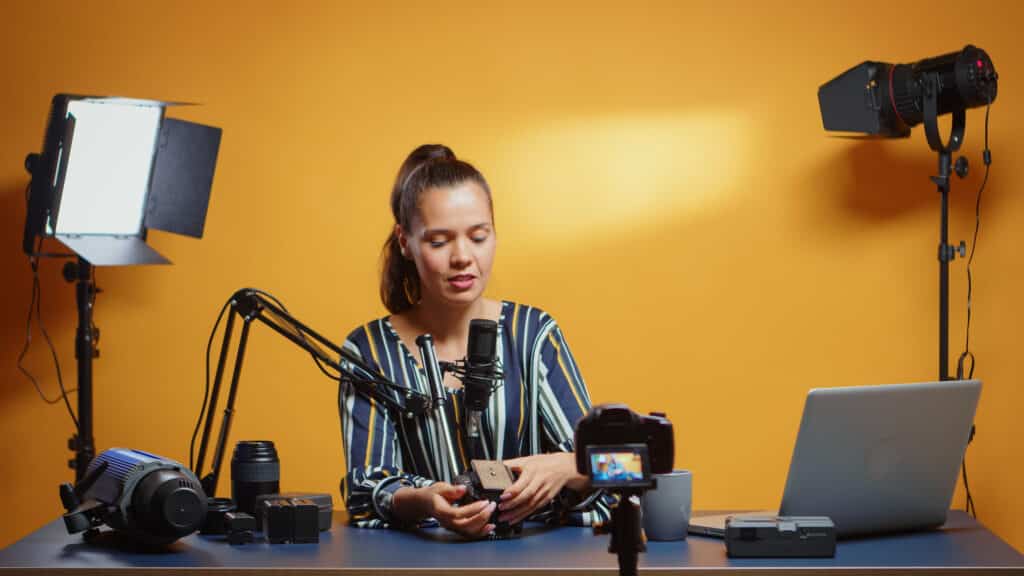
Creating a professional-looking video podcast doesn’t have to be expensive. With the right equipment, thoughtful camera placement, and basic lighting techniques, you can produce visually engaging content that elevates your show—regardless of your budget.
Start with What You Have
If you’re just getting started, begin with your smartphone or webcam. Modern phone cameras offer high-quality video and can serve as your primary angle. Adding a second smartphone or a budget-friendly USB webcam gives you the flexibility to switch between shots, adding dynamic variety to your final edit. Free software like OBS Studio can help you manage multi-camera recording, even with limited gear.
Smart Camera Upgrades for Mid-Tier Budgets
Once you’re ready to move beyond a basic setup, investing in entry-level DSLR or mirrorless cameras can greatly enhance the look and feel of your video podcast. Brands like Canon (with the EOS M50), Sony (with the ZV-E10), and Panasonic offer affordable models that deliver excellent image quality and support features like clean HDMI output and manual exposure settings. These cameras allow for greater control over lighting, focus, and depth of field, helping you achieve a cinematic look even in a small recording space. To connect these cameras to your computer, you’ll need a video capture card like the Elgato Cam Link or similar alternatives, which make it easy to turn your camera into a high-quality webcam. With multiple cameras, consider assigning different roles: one for a straight-on host shot, another for a guest angle, and a third for a wide or behind-the-scenes perspective. This variety keeps your video dynamic and visually engaging without overwhelming your setup.
Lighting Matters More Than You Think
Good lighting can dramatically improve the quality of your video, often more than upgrading your camera. A well-lit scene highlights your facial expressions, reduces harsh shadows, and gives your content a polished, professional appearance. If you’re just starting out, natural light from a window can serve as an effective key light. For more control, consider budget-friendly LED panels or ring lights that allow you to adjust brightness and color temperature based on your environment.
A simple three-point lighting setup—consisting of a key light, fill light, and backlight—can enhance depth and make your visuals more engaging. Position your key light at a 45-degree angle to your face, use a softer fill light on the opposite side to reduce shadows, and add a backlight to separate you from the background. Even with low-cost equipment, consistent lighting placement and color balance across sessions will keep your video podcast looking clean and professional.
Syncing Sound and Polishing Your Final Cut
While a multi-camera setup adds visual appeal, your podcast’s audio must remain sharp and properly aligned to maintain a professional experience. Always prioritize the use of an external microphone, as it will deliver cleaner, more controlled sound than your built-in camera or phone mic. For best results, monitor your audio during recording and consider capturing it separately from the video feed. A simple technique like clapping at the start of a session creates a visual and audio marker, making it easier to sync footage during editing.
Once recording wraps, the editing process brings your project to life. Use video editing software such as Adobe Premiere Pro, DaVinci Resolve, or iMovie to cut between camera angles, overlay titles or graphics, and make color or lighting adjustments. Pay attention to pacing and audio continuity as you transition between shots. Adding consistent visual elements like lower thirds, intro bumpers, or background music can further elevate the production value. Clean editing and sound synchronization not only enhance professionalism but also keep your audience engaged from start to finish.
Conclusion
A multi-camera video podcast setup doesn’t have to break the bank. Whether you’re using smartphones, entry-level cameras, or professional gear, the key lies in thoughtful setup, consistent lighting, and strong audio. With a few smart choices, you can create visually compelling content that stands out and keeps viewers engaged—no matter your budget.
Looking to take your podcast to the next level? Book a session at Modern Stoa Podcast Studio. Go to modernstoa.co/studio.
Podcast Post-Production Automation: Simplifying Your Editing Workflow
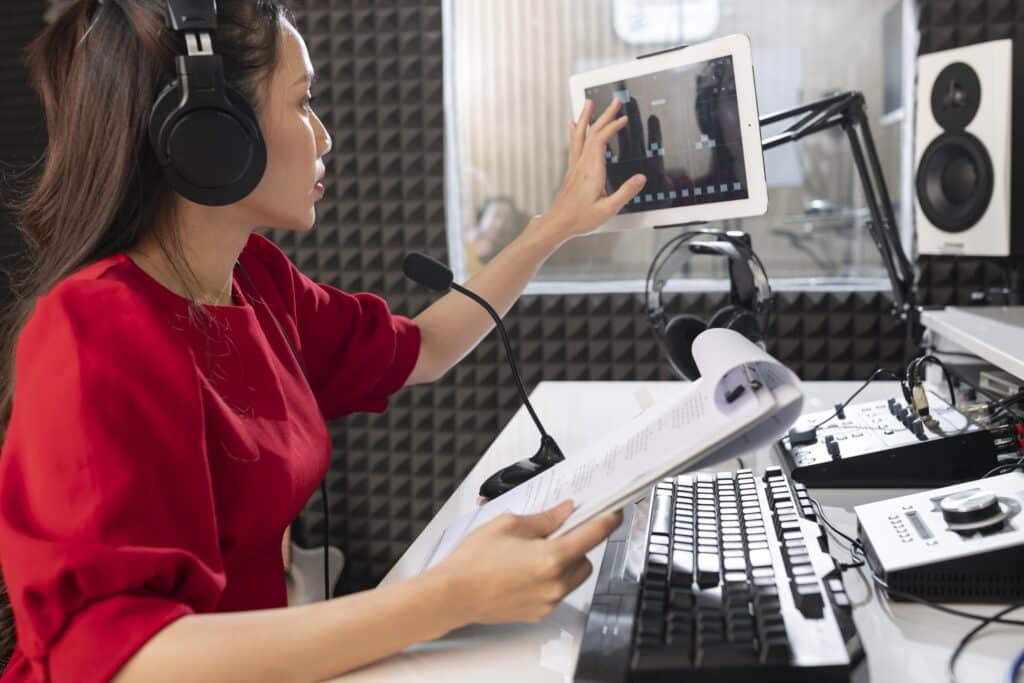
Creating a podcast is exciting, but the editing stage can often feel repetitive and time-consuming. Luckily, with the right automation tools and strategies, podcasters can speed up their post-production process while still keeping full creative control over their content.
Why Automate Your Podcast Editing?
Many podcast editors spend hours on tasks like removing background noise, adjusting audio levels, cutting out filler words, or trimming long pauses. These steps are important but can quickly become tedious. Automation helps by handling these routine chores, giving you more time to focus on crafting engaging stories and refining your message.
Tools and Techniques to Automate Your Editing Pipeline
AI-Based Audio Editors: Platforms such as Descript and Auphonic offer smart features that automatically clean audio, balance sound, and even transcribe your episodes. For example, Descript lets you edit your podcast by editing the transcript text, so deleting a filler word in the text removes it from the audio instantly. This method saves hours compared to traditional editing.
Automation Services for Workflow: Using services like Zapier, you can connect your recording software with cloud storage and publishing platforms. This setup can automatically organize your files, generate episode summaries, or upload finished episodes to your hosting service, reducing manual steps.
Consistent File Organization: Setting up a clear folder structure and naming system for each episode helps automation tools work efficiently. For instance, a folder named with the episode number and date can trigger scripts that process and tag your audio files automatically.
Video Podcast Automation: If your podcast includes video, tools like Riverside or Headliner can automatically edit multi-camera footage, add subtitles, and create promotional clips for social media, cutting down on post-production time.
Keeping Your Creative Touch
Automation is meant to assist, not replace your artistic decisions. Most tools allow you to review and tweak edits before finalizing the episode. This way, you maintain full control over the tone, pacing, and style of your podcast while benefiting from faster workflows.
Final Thoughts
By integrating AI-powered editors, workflow automation platforms, and organized file management, podcasters can transform their post-production process from a bottleneck into a smooth, efficient system. This balance between automation and creative input makes producing high-quality episodes more manageable and enjoyable.
Embracing automation in your podcast editing pipeline can save you time and energy, allowing you to focus on what matters most—connecting with your audience through compelling content.
Looking to take your podcast to the next level? Book a session at Modern Stoa Podcast Studio. Go to modernstoa.co/studio.
Batch Recording for Podcasters: How to Build a Sustainable Content Bank
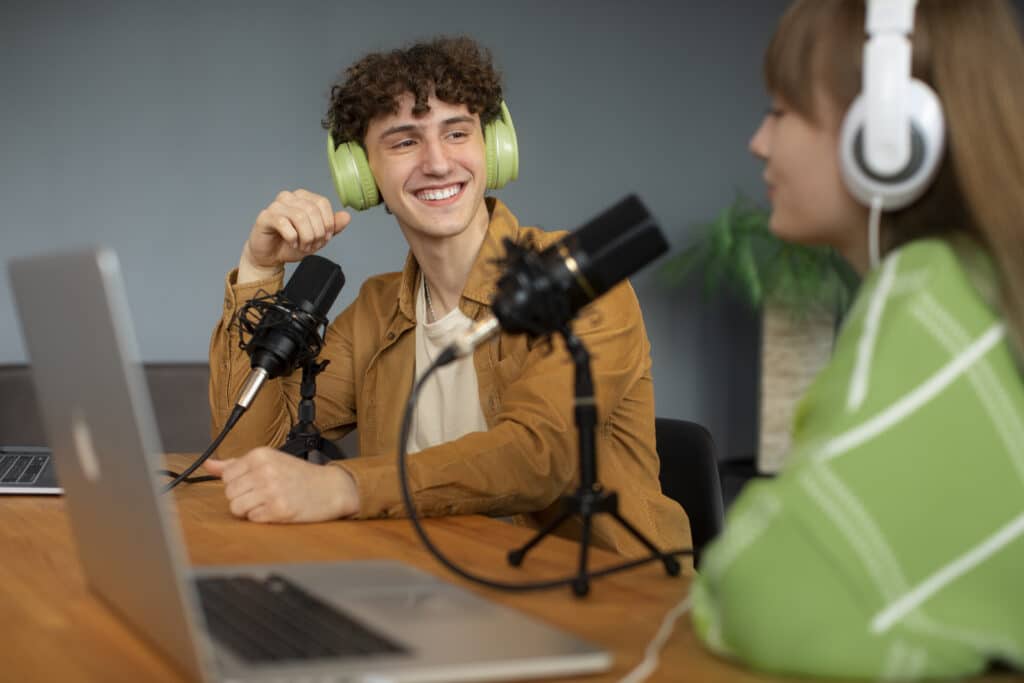
Staying consistent with podcast production is crucial, but producing new episodes weekly can quickly lead to creative burnout. Batch recording is a strategic approach that allows podcasters to record multiple episodes in a single session, ensuring steady output while preserving energy and avoiding stress.
Mastering Batch Recording Through Strategic Planning
Batch recording is a productivity technique that involves planning ahead and recording multiple podcast episodes in a single, focused session, much like prepping meals for the week. By creating a buffer, podcasters gain flexibility to handle travel, emergencies, or creative downtime without disrupting their publishing schedule. The key to making this approach work lies in thorough preparation: developing a content calendar that maps out themes and topics for the month, and crafting clear outlines for each episode with talking points, research notes, and necessary audio elements. This upfront planning streamlines the recording process, making sessions more efficient and consistent.
Optimizing Your Recording Setup and Vocal Health
Creating an optimal recording environment and caring for your voice are both essential to successful batch podcasting. Choose a quiet, well-furnished space, such as a closet or carpeted room, to minimize echo, and position your microphone consistently while arranging your equipment to support comfort and good posture during extended sessions. Equally important is vocal preparation: warm up with light stretches, breathing exercises, and vocal glides before recording, and limit batch sessions to three or four episodes with short breaks in between. Staying hydrated and pacing yourself throughout the session helps maintain vocal clarity and overall audio quality.
Managing Workflow and Guests
If you’re interviewing guests, plan ahead. Share episode agendas in advance, offer flexible recording times, and batch guest episodes along with solo ones for efficiency. Stick to evergreen topics whenever possible so your backlog stays relevant over time.
Maintaining Consistency and Quality
Maintaining consistency across episodes matters. Rehearse your intros, keep your delivery upbeat, and take a few seconds of silence at the beginning of each recording to help with post-production noise filtering. The more uniform your sessions, the faster your editing process will be.
Sustaining Your Podcast Through Smart Planning and Buffer Building
One of the greatest advantages of batch recording is the sustainability it brings to your podcasting workflow. By reducing the constant pressure of weekly production, you create space to focus on editing, promotion, and long-term growth while avoiding the chaos of unexpected disruptions. Recording episodes in similar conditions streamlines post-production, allowing for faster editing with consistent audio quality. Most importantly, building a content buffer of 4–6 episodes serves as a safety net, ensuring that travel, illness, or creative slumps don’t derail your release schedule. This proactive approach keeps your podcast running smoothly and consistently, even when life gets unpredictable.
Final Thoughts
In the end, batch recording isn’t just a productivity hack—it’s a method for building a resilient, stress-free podcasting process. With thoughtful planning, an optimized setup, and vocal care, you can create consistent, high-quality content while protecting your creative well-being.
Looking to take your podcast to the next level? Book a session at Modern Stoa Podcast Studio. Go to modernstoa.co/studio.
AI-Powered Audio Enhancement Tools for Independent Podcasters
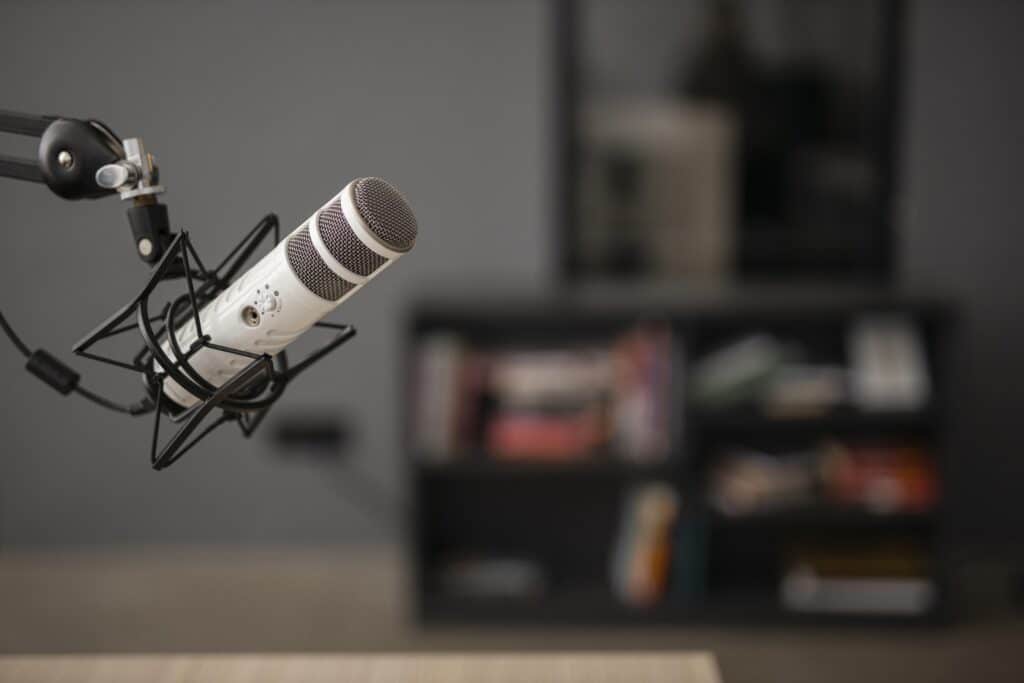
For independent podcasters, producing clear, professional-sounding audio can be a major hurdle, especially without access to expensive studios or sound engineers. Fortunately, AI-driven audio enhancement tools are leveling the playing field by making high-quality sound accessible and affordable.
The Challenge
Many solo podcasters record in less-than-ideal spaces, leading to background noise, echoes, and uneven volume levels. Traditional editing software often demands technical skills and time, which can distract creators from focusing on their content.
Key AI Enhancement Features
AI tools automatically reduce unwanted noises like traffic, keyboard clicks, or room hum without compromising voice quality. They also balance audio levels and improve speech clarity, sometimes in real time, saving hours of manual editing.
Essential Tools for Independent Creators
- Descript: Edit podcasts by editing transcripts, with AI-powered transcription and voice correction.
- Adobe Podcast: Offers free AI-based speech enhancement to upgrade audio quality instantly.
- Cleanvoice AI: Removes filler words and background sounds across many languages.
- Auphonic: Automatically adjusts sound levels and reduces noise with minimal effort.
Affordable and Accessible
Many AI tools offer generous free tiers designed for independent creators. Adobe Podcast provides core features at no cost, while Auphonic offers two hours of free monthly processing. This pricing structure makes professional audio quality achievable regardless of budget constraints.
Beyond Audio Enhancement
Modern AI platforms integrate the entire podcast workflow—from recording and editing to transcription and publishing. Tools now generate show notes, social media content, and episode summaries automatically, allowing creators to focus entirely on content creation.
The Bottom Line
AI-powered audio enhancement is democratizing professional podcast production. Independent creators can now compete with well-funded productions based on content quality rather than production budget, fostering a more diverse and creative podcasting landscape where compelling stories take precedence over technical resources.
Looking to take your podcast to the next level? Book a session at Modern Stoa Podcast Studio go to modernstoa.co/studio.
How to Write Podcast Show Notes That Attract, Engage, and Convert
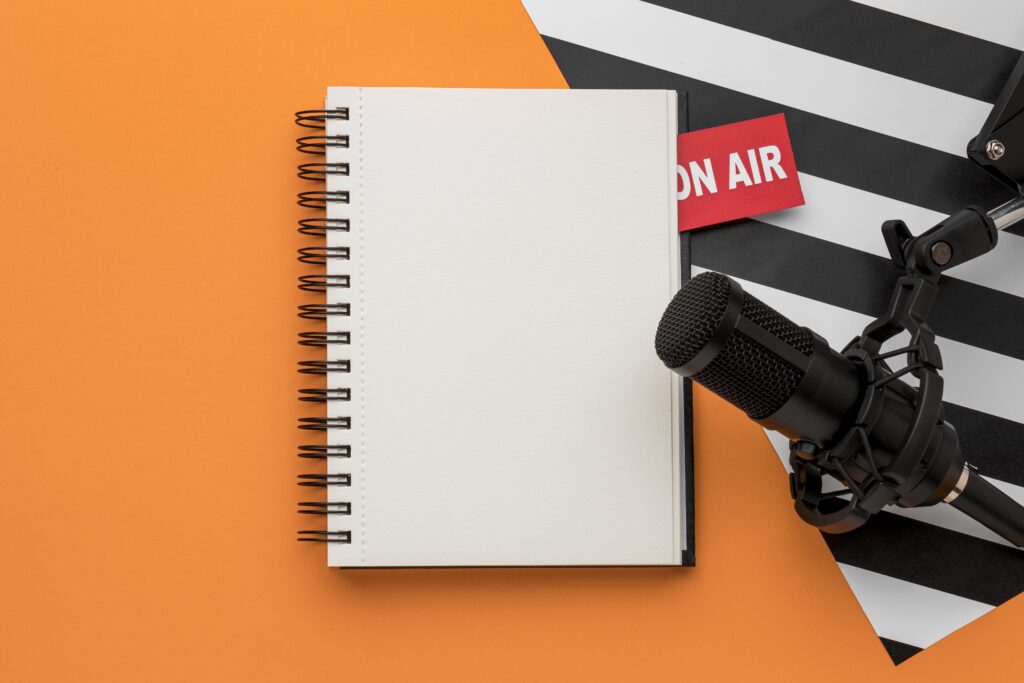
Podcast show notes are often underestimated, but they play a vital role in your content strategy. Far beyond a simple recap, show notes can boost discoverability, enhance the listener experience, and even drive traffic to your website or offers. If you want your podcast to do more than entertain—if you want it to grow your brand—then your show notes need to be purposeful and well-written.
Start Strong with an Enticing Introduction
The first few lines of your show notes are crucial. They serve as the hook that convinces a potential listener to hit play. A vague sentence like “In this episode, we talk about business” doesn’t say much. Instead, use this space to highlight the episode’s value. Focus on what’s in it for the listener. What will they walk away with? Who is the guest, and why should someone care about their insights? A strong introduction should create curiosity, set the tone, and make the audience feel like they can’t miss out.
Summarize the Key Topics Covered
After the introduction, it helps to include a concise summary of what the episode explores. This gives the reader a preview of the episode without revealing everything. Mention the major themes, any standout moments, or thought-provoking questions that came up during the conversation. This section should read like a well-edited recap—clear, tight, and easy to scan. If you’re targeting SEO, this is also a good place to naturally include relevant keywords without sounding robotic.
Add Timestamps for Easy Navigation
Timestamps can transform the listening experience. They allow busy listeners to skip to the parts that interest them most or return later to revisit specific insights. If your episode is long or covers multiple topics, this section becomes even more valuable. Even just noting when a major topic begins—such as a guest’s origin story, a discussion on strategy, or a Q&A segment—can help the audience feel more in control of their experience.
Mention Resources, Tools, and Links
Every episode has the potential to direct listeners toward something deeper. Whether it’s a course, a downloadable resource, a guest’s website, or even your own services, your show notes are the perfect place to house those links. This section should feel helpful, not salesy. Share what was mentioned during the episode and offer links that allow the listener to explore further. This also increases your chances of affiliate revenue or conversions, depending on your goals.
Write a Compelling Call-to-Action (CTA)
Don’t end your show notes without telling the reader what to do next. Whether it’s subscribing to the show, leaving a review, following on social media, or joining your email list, a clear call-to-action helps turn casual listeners into loyal fans. You don’t need to include every CTA in every episode—choose one that’s most relevant and aligned with your goals. Keep it simple, direct, and inviting.
Well-written show notes do more than recap an episode—they extend its life, enhance its impact, and make your podcast more discoverable. Whether you’re trying to grow your audience, drive traffic to your offers, or simply create a better listener experience, taking the time to craft thoughtful show notes is always worth it.
Looking to take your podcast to the next level? Book a session at Modern Stoa Podcast Studio go to modernstoa.co/studio.
The Best Podcast Formats for Growing Your Audience

With so many podcasts competing for attention, choosing the right format is one of the most important steps in creating a show that stands out and keeps listeners coming back. The structure of your podcast sets the tone, guides the listener experience, and helps define your brand’s personality. Whether you’re an individual creator or a business looking to build a presence in the audio space, selecting the right format can determine how effectively you grow
Interview Podcasts
Interview podcasts are among the most common and versatile formats. These shows usually feature a host who brings in guests to discuss specific topics. The tone can be casual and conversational or structured and educational, depending on the brand. One of the major advantages of interviews is that guests bring new perspectives and stories, which can keep your content fresh. They also bring their own audiences, creating opportunities for organic growth and cross-promotion. This format is especially powerful for entrepreneurs, educators, coaches, or anyone aiming to build authority in their field.
Solo Podcasts
A solo podcast—or monologue-style show—is driven entirely by the host. This format is great for personal brands and thought leaders who have unique insights or stories to share. Without the need for guests, production becomes more streamlined, and the host has full control over the content, pacing, and delivery. Solo shows can foster a strong personal connection with the audience because listeners become familiar with the host’s voice, opinions, and personality.
Roundtable or Panel Discussions
Roundtable podcasts involve multiple voices, usually with a host moderating a discussion among guests or recurring panelists. These shows are often lively and unscripted, giving listeners a sense of sitting in on a real conversation. The energy of a group discussion can make for entertaining, thought-provoking content, especially when the topic lends itself to multiple opinions.
Storytelling / Narrative Podcasts
Storytelling formats are among the most powerful and emotionally resonant types of podcasts. These shows are typically scripted and built around a story arc, whether that’s a true-crime investigation, a personal memoir, a fictional drama, or a brand journey. The immersive nature of this format—often enhanced by music, sound effects, and voice acting—can create unforgettable experiences for listeners.
Hybrid Formats
Hybrid podcasts blend two or more of the above styles. For example, a creator might alternate between interviews and solo commentary or combine narrative elements with guest insights. This format gives creators the flexibility to experiment and adapt their show as their brand grows.
When choosing a podcast format, it’s important to consider your brand goals, audience preferences, and personal strengths. Think about what type of content you’re passionate about producing consistently. There’s no one-size-fits-all answer—but the best format for growing your audience is the one that aligns with your message, your strengths, and the kind of value you want to provide to listeners.
Looking to take your podcast to the next level? Book a session at Modern Stoa Podcast Studio go to modernstoa.co/studio.
Podcast Studio Rentals: What You Need to Know Before You Book
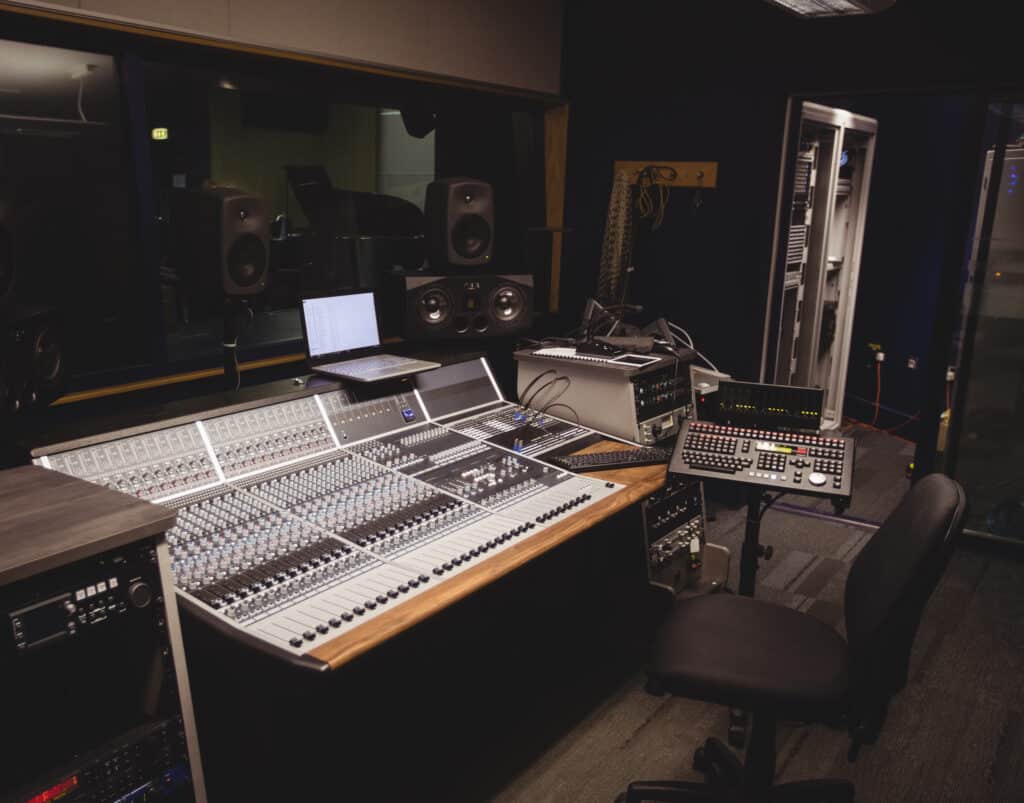
In today’s booming audio content market, podcasting has become more than just a hobby—it’s a legitimate platform for storytelling, education, branding, and income generation. Whether you’re a first-time podcaster or a seasoned voice behind the mic, the environment you record in can make or break your production quality. That’s where podcast studio rentals come in. Before you click “Book Now” on a studio listing, here are some key things you should know to make sure you’re investing in the right space for your needs.
1. Sound Quality Is Everything
The main reason for renting a professional studio is to get that crisp, clear audio quality that’s hard to replicate at home. Look for studios with:
- Soundproofed walls and acoustic treatment
- High-quality microphones (Shure SM7B, Rode NT1, or similar)
- Audio interfaces and mixers to ensure professional-level sound
- Headphones and mic stands are included in the rental
2. Check the Equipment List
Studios vary widely in terms of what’s included. Some are plug-and-play, while others expect you to bring your own laptop or SD cards. Ask about:
- Microphone types and count (important if you have guests)
- Camera and lighting (if you’re recording video podcasts)
- Recording software or engineers provided
Remote guest capabilities (Zoom, Riverside.fm, etc.)
3. Know the Studio’s Booking Policies
Each studio operates differently. Some key things to clarify include:
- Minimum booking time (some require at least 2 hours)
- Late policies or grace periods
- Cancellation/rescheduling rules
- Overtime charges
4. On-Site Support Matters
Are you tech-savvy, or do you need help setting up your session? Some studios offer in-house engineers or assistants, while others are self-service. If you’re newer to podcasting, look for rentals that include:
- A studio manager or engineer during your session
- Onboarding support or a quick walkthrough
- Troubleshooting help for live or remote recordings
5. Studio Ambiance and Aesthetics
The vibe of your studio space can influence how you feel while recording, especially for video podcasts. Clean, organized, and well-lit studios are ideal. If the studio has a visually appealing setup, you can use it as part of your social media content.
6. Pricing and Packages
Rates can vary from $100/hour to $150/hour or more, depending on the city, equipment, and included services. Ask if they offer:
- Discounted packages for recurring bookings
- Monthly membership plans
- Add-ons like editing, mixing, or marketing support
Renting a podcast studio is an investment in your brand’s credibility and production quality. But not all studios are created equal. By doing your homework, asking the right questions, and choosing a space that fits your technical and creative needs, you’ll set yourself up for podcasting success, episode after episode. Make a checklist using the tips above and don’t hesitate to reach out to the studio team with your questions. The right space can elevate your podcast from good to unforgettable.
Looking to take your podcast to the next level? Book a session at Modern Stoa Podcast studio, go to modernstoa.co/studio
5 Common Podcasting Mistakes
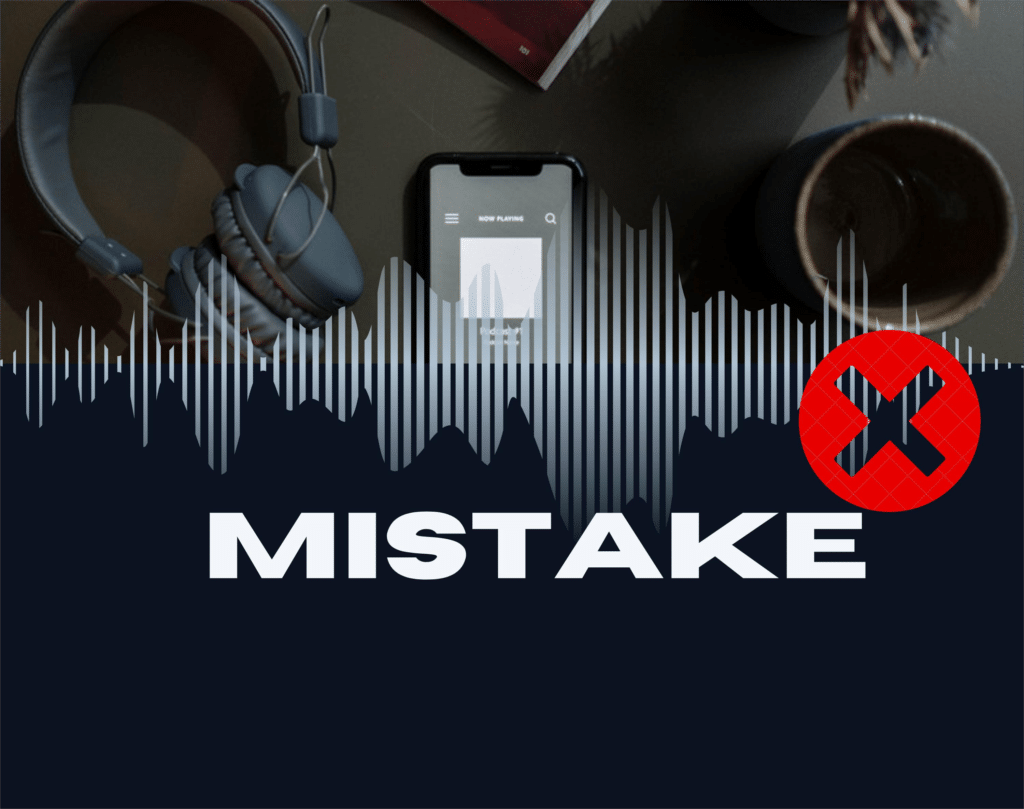
Podcasting is an incredibly powerful tool for building your brand, sharing your story, and connecting with your audience. But even the most talented creators can face challenges when it comes to producing high-quality podcast episodes. From poor audio quality to inconsistent sound levels, these issues can easily detract from the listener experience. Luckily, there’s a solution! Here are five common podcasting mistakes that new podcasters often make — and how our podcast recording studio helps you avoid them:
1. Poor Audio Quality
One of the most frustrating mistakes that podcasters face is poor audio quality. Whether it’s background noise, muffled voices, or a lack of clarity, low-quality audio can ruin an otherwise great podcast. Listeners are quick to abandon shows with subpar sound, especially when they have plenty of other options.
2. Lack of Soundproofing
Recording podcasts from home or in non-professional spaces often leads to unwanted distractions — whether it’s traffic, household noise, or people walking in and out of the room. These disturbances can be difficult to avoid and are often picked up by microphones, leading to frustrating sound issues.
3. Inconsistent Recording Levels
It’s common for podcasters to struggle with inconsistent audio levels during a recording session. One moment your voice may sound loud and clear, and the next, it may be too soft or distant. This inconsistency can make your podcast sound unprofessional and frustrate listeners who are constantly adjusting their volume.
4. Poor Mic Technique
Even with the best microphones, improper mic technique can lead to popping sounds, distortion, or unclear speech. Holding the mic too far from your mouth or speaking too closely to it can result in uneven audio that distracts from the message you’re trying to share.
5. Post-Production Support
Even if you get everything right during the recording, post-production can make or break your podcast. Editing mistakes, unwanted noises, and audio inconsistencies can still sneak through.
Podcasting can be a rewarding experience, but it’s important to avoid the common mistakes that can affect the quality of your show. At our studio, we’re dedicated to providing you with the best tools, equipment, and expert support to ensure that your podcast sounds professional and engaging from start to finish. By choosing a professional recording studio, you’re setting yourself up for success and making it easier to avoid these common pitfalls. Whether you’re new to podcasting or looking to take your show to the next level, we’re here to help you create exceptional content.
Looking to take your podcast to the next level? Book a session at Modern Stoa Podcast studio go to modernstoa.co/studio
When Silence Speaks: The Art of Editing in Podcasting

In the age of constant noise—scrolling feeds, autoplay videos, and never-ending notifications—silence is more powerful than ever. For podcast editors, it’s not just the absence of sound; it’s a storytelling tool. The best editors know that silence, when placed with intention, can carry as much weight as dialogue, music, or sound effects. It’s in the spaces between words where tension builds, emotions simmer, and stories breathe.
The Emotional Power of Silence
Silence can do what words sometimes can’t. It can evoke reflection, emphasize a moment, or create anticipation. In true crime podcasts, a pause after a chilling revelation lets the gravity of the moment sink in. In interviews, silence can signal discomfort, honesty, or thoughtfulness. Great editors know when to leave the quiet in—and when to cut it away.
Pacing: More Than Just Speed
Pacing isn’t about editing fast or slow—it’s about rhythm. Good pacing keeps the listener engaged without overwhelming them. Editors often adjust pacing to match the emotional tone of the story. A fast-paced montage might heighten excitement or chaos, while a slow, deliberate exchange can evoke intimacy or grief. Top editors treat pacing like a composer treats tempo: guiding the listener’s emotional journey beat by beat.
Clean Cuts: The Invisible Craft
Clean cuts are the unsung heroes of immersive audio storytelling. When an edit is seamless, the listener doesn’t notice it—but they feel it. A clean cut preserves the speaker’s cadence and ensures flow, making even the most intricate splices sound natural. Achieving this requires technical skill and an ear for speech patterns. Editors often cut on breaths or consonants, using fades or ambient noise to mask transitions. It’s surgical work—precise, deliberate, and often invisible.
Editing Is Storytelling
Editing isn’t just post-production—it is production. It’s the process of choosing what’s heard, what’s felt, and what’s left unsaid. And in podcasting, where intimacy and attention are everything, editing can make or break the listener’s experience.
So the next time you’re moved by a podcast, pay attention to the moments of silence, the ebb and flow of pacing, and the transitions so clean you hardly notice them. That’s the editor at work—shaping sound into story, letting silence speak louder than words.
Looking to take your podcast to the next level? Book a session at Modern Stoa Podcast Studio go to modernstoa.co/studio.
Remote Recording Realities: How the Industry is Adapting to Long-Distance Production

Podcasting has always been about connection. But in today’s landscape, that connection no longer requires sharing the same physical space. Remote recording — once a workaround — has now become the industry norm, reshaping how teams collaborate and how stories are captured.
The rise of remote interviews has opened the door to greater flexibility and accessibility. A guest in London, a host in Los Angeles, and a producer in Texas can now create a seamless episode together. Geography is no longer a barrier — and that’s changed everything. More voices can be heard, more stories can be told, and more creators can join the game without the traditional costs and logistics.
Of course, it’s not without its challenges. Laggy audio, background noise, and inconsistent mic setups can quickly derail an otherwise compelling conversation. But as the demand for remote content rose, so did the solutions. Here are a few go-to platforms that are shaping the remote podcasting workflow:
- Riverside.fm: Offers local audio and video recording in studio quality, even with remote guests.
- SquadCast: Great for capturing clean audio tracks separately and minimizing dropouts.
- Zencastr: A user-friendly platform that includes video, live editing, and cloud backups.
- Cleanfeed: Popular among audio pros for high-fidelity live recordings.
- Descript: Transcription and multitrack editing in one — perfect for hybrid teams who want to collaborate async.
Hybrid teams are also the new normal. Many podcast studios now operate with distributed staff — producers, editors, writers, and marketers all collaborating remotely. Hybrid Teams: The New Normal Many production teams now operate across time zones. A showrunner in LA might coordinate with a virtual assistant in Manila, a sound designer in Berlin, and a social media manager in Chicago. What makes it work?
- Clear workflows (Trello, Notion, or Asana for task management)
- Regular check-ins (Slack huddles, Zoom calls, async voice notes)
- Cloud storage (Google Drive, Dropbox, or Frame.io for file sharing and feedback)
Maintaining quality in a remote setting takes intention. Many studios now send mic kits directly to guests or guide them through setup beforehand. A short pre-call to test sound levels and the environment can make a huge difference. In post-production, experienced engineers use EQ, compression, and noise reduction to polish the final product — but clean source audio still makes the biggest impact.
What once seemed like a compromise has become a creative edge. Remote production allows for faster turnaround, broader talent access, and more inclusive storytelling. But for those who want the cleanest, most professional sound possible, nothing quite beats the consistency and control of recording in a proper studio.
Looking to take your podcast to the next level? Book a session at Modern Stoa Podcast studio go to modernstoa.co/studio
